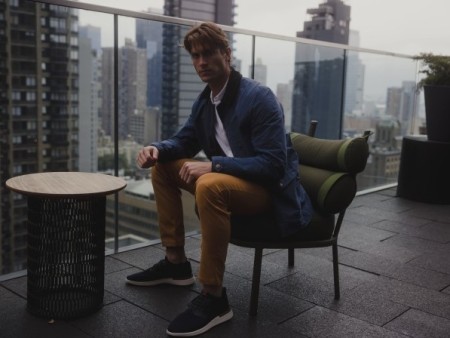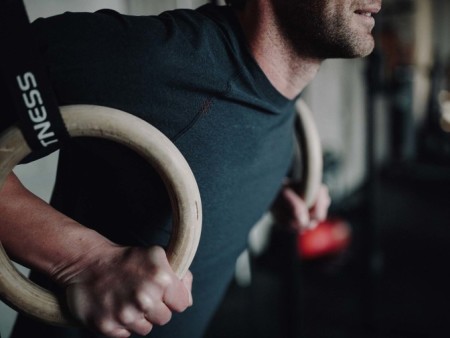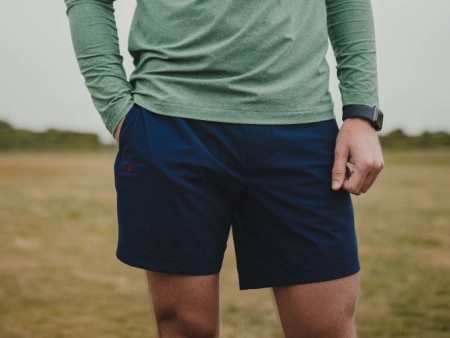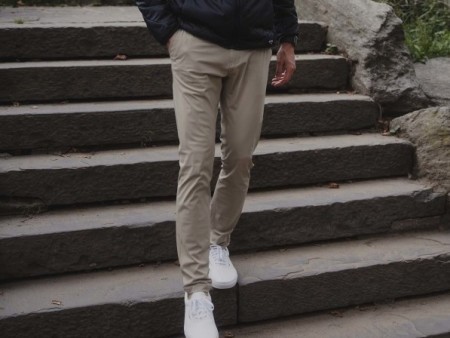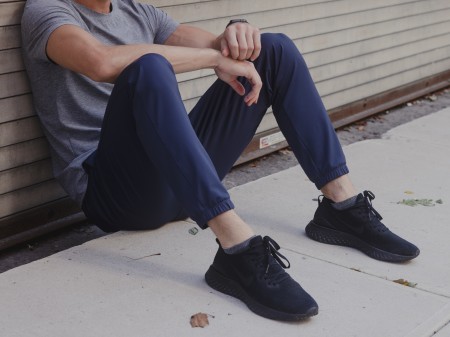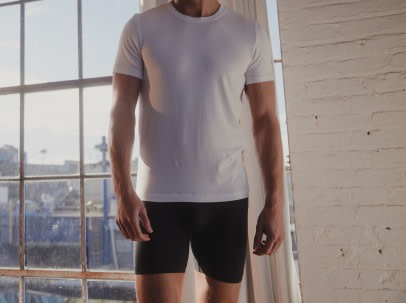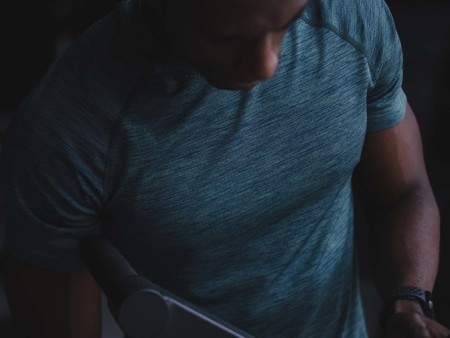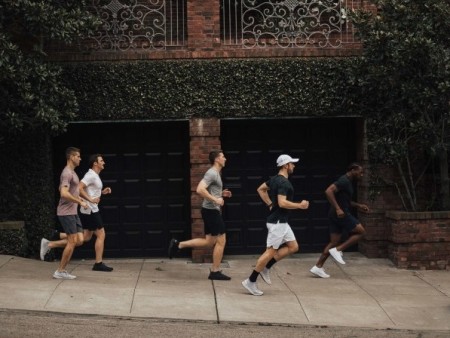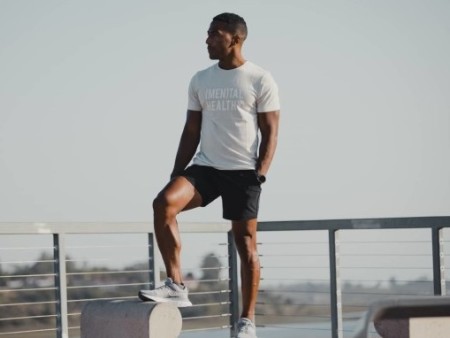blading across america for 10forten with louis chaix
Imagine you’re a perfectly normal, healthy child and then one day, everything changes. The life you once knew looks nothing like it did before and you’re staring death, something you can’t truly comprehend at the time, straight in the face. This is where Louis Chaix’s story starts.
Born in Paris, Louis grew up on the West Coast of France near Bordeaux with dreams of playing professional hockey in the States. A normal, active kid, it was a sudden itch and extreme exhaustion that led way to a life-altering diagnosis. At just six years old, Louis was diagnosed with Toxic Epidermal Necrolysis, known as TEN. According to the Cleveland Clinic, TEN, the most severe form of Stevens-Johnson syndrome, is when large areas of one’s skin blister and peel all over the body – including inside the mouth or eyes. For Louis, these incredibly painful skin lesions occurred on over 80% of his body. Prior to his official diagnosis, Louis endured over three weeks of the wrong treatments which he described as, “putting gas on the fire.” Finally, with a diagnosis, came an emergency helicopter ride to the Paris Hospital Burn Unit. “When I woke up in the burn unit in Paris, it was like that hospital scene of 20 doctors, bright lights and everyone looking at you,” Louis recalls. With the lingering fear among doctors that he might not make it, Louis’s dream to play hockey ran so deeply in his soul that he promised himself, if he was to overcome this hurdle he was now facing, he would be playing hockey in North America. “And here I am,” he says, “playing in my 10th year of hockey here.”

Louis wearing the 7" Mako Short / Photo by Colby Kern
The recovery process for Louis was slow–about two and half years to be exact. From relearning how to walk to having to apply sunscreen and ointments multiple times a day to wearing layers of clothing just to go outside, there’s no doubt that Louis’s life has been impacted forever. But in no way has he played the role of victim. “Now,” he says, “my skin is very sensitive to the sun but other than some scars and skin sensitivity, that’s all that I’m affected by – I’m very fortunate. Every case for these [TEN] patients is different. There are people that deal with insane side effects from eyelashes growing the wrong way, major teeth issues, flare ups. I don’t have any of that.” And while you can hear the gratitude in his voice when he talks about his experience, Louis has dealt with one unspoken side effect – survivor’s guilt. “Last year, I was feeling some sort of survivor's guilt,” he notes. “I'm like, you know, I didn't steal anything from anyone, I didn’t do anything wrong, I earned the right to be here today, and I fought really hard – that was my battle. But why is it that I survived and I get to chase my dreams every day when some people are dealing with TEN and extensive side effects daily, and they don't know what's waiting for them.” And that’s where the switch flipped. Instead of sitting with guilt, Louis decided to take action.
As a hockey player at Missouri State, it has become almost ritualistic for Louis’s teammates to slap on their rollerblades and skate around campus. After becoming a part of the tradition himself, Louis had a crazy idea–to rollerblade across America. Louis thought to himself, “You need to do this – there's something about it, I need to do this.” Being the kind of person he is, he quickly realized that this feat could and would be for something far greater than himself. “I thought, I need to put meaning behind this, so I’m thinking…well, hello, you survived an extremely rare skin disease. You've never spoken to any specialists since you've been sick or have become a survivor, you’ve never met anyone who's had the disease or has dealt with what you've dealt with. And then I realized I was on to something and from there, it was just, LET’S GO!” It was then that 10forTEN was born.
Without knowing how he’d actually prepare for and accomplish his goal, Louis had made up his mind. He was going to rollerblade across the country. Knowing he had to get funding from somewhere, he started reaching out to different organizations, one of which was the Steven Johnson Foundation. After three weeks of his calls going unanswered, one afternoon, a woman finally picked up. The very next day, that woman got Louis on the phone with specialists at Vanderbilt University and, in his words, “from there, it was really just a snowball effect.”
After connecting with the group of specialists at the Vanderbilt University Medical Center (the now research center affiliated with the journey), Louis connected with the team at Mia Film Productions to document everything from start to finish. And the training began on January 31, 2021. What does the training actually look like for Louis? It certainly hasn’t come without its own set of challenges. For starters, Louis is a full-time college senior currently enrolled in 18 credit hours. On top of that, he’s balancing hockey practice and games, work and workouts that require him to be in the gym, pool or on the road sometimes upwards of three times a day. Louis explains “Monday, for example, I woke up around 4 a.m. I went to the gym and lifted for two and a half hours. By the time I got home, it was 7 a.m. I had breakfast and went to class from 8 a.m. to 12 p.m. After class, I went swimming for an hour and then I had a two hour lab.Then I had a couple of meetings and work. When I got back to my room it was probably around 10:30 p.m. but I decided to go for an hour run. Then I had to eat, do homework and I went to bed probably around 3 a.m.” Sounds like nothing short of an incredibly demanding balancing act. One that keeps pulling Louis in different directions between the excitement of his future pursuit and enjoying his current moments. “I'm running left and right right now. But it is what it is, you know? I didn't have to do this 10forTEN journey. This is life– life doesn't stop just going because you have things you want to do. And as much as I want the journey to begin,” he says, “I know that when I'm going to be skating, there's going to be times that I'm going to be absolutely miserable. And I'm going to look back at these moments now and be like, ‘Why didn't you enjoy it?’” Those thoughts can’t last too long however, given Louis' training regime.
I lift three days a week and then I’m either swimming, biking or running (or a combination of two or three) every day but there’s one day a week where it’s strictly cardio,” says Louis. “For example today, I haven’t worked out yet but I have to swim, bike and run for an hour each.
It’s not just through these personal training accomplishments, like going from being unable to swim well at all to swimming for 2 hours no problem, that encourage Louis to keep going.
My main thing is no matter what, I want to stay true to who I am–balanced and level headed. This isn't about me. This is about the disease and shedding light on what other people are going through, what I went through and educating people so we can save lives.
Not only that but he thinks of his six year old self, laying on his deathbed and can quickly shift his mindset from a place of I have to, to a place of I get to. He also notes, “I also feed off of all the positive comments that I might get. They go such a long way. It's something I've learned throughout my journey, to be a good person. I think I've always been a nice person but now, I'll go out of my way to be nice to people–it's so easy. It doesn't cost anything to make somebody's day and it goes such a long way–that's really important to me.” But it’s not just the positive comments that Louis utilizes to keep pushing. “I think about all the people that don't want me to do this,” he says. “I put together a little template with all the people that have tried to get in the way or that never believed in me. I wrote out the things they've said to me and I look at it whenever I feel like I don’t have the strength at that moment.” But even more so than positive or negative comments is Louis’ lust and enthusiasm for life. “I just love life, you know, I value being alive,” he says. “And I value every day that I get. I'm so far from my family, I have this crazy opportunity to be here to play hockey and just to wake up and breathe everyday. I want to live 25 hours out of my 24 hour day.”

Louis wearing the Basic Cycling Short / Photo by Mike Hatfield
All of the training, time and energy that is going into the pursuit of rollerblading across the United States, leaves a lot of time for Louis to be, well, with himself and his thoughts. “When you’re doing something uncommon and you’re pursuing something that’s bigger than yourself, it can feel really lonely because a lot of people don’t understand. Even with all of the supportive messages I get, it can feel lonely because people don’t understand either the life I have to live to put this together or how much really goes into it.” Another moment in time where we’re reminded that what we see online is more often than not, just a piece of a much, much larger puzzle. While an inspiring, creative video of Louis training is just that, what people don’t see is what it takes to put that video together or the hours that Louis is actually working to get stronger.
And as much as Louis has been training to get physically stronger, there has been a lot of mental training as well. The moments in training where he could easily shorten his workout or skip it all together because it’s been a long day, he’s learned to tell that voice “no.” The moments when he recognizes how tough certain aspects of the skate will actually be but he wants to be able to say to himself that he gave it absolutely everything he had. And as he’s been navigating all this time spent internally, he’s learned how to really listen to others. “I'm always curious to see how people around me, athletes or non-athletes deal with adversity and their techniques and tricks they do. When you get to communicate with so many people and listen to others, you can apply it all to yourself. Some things work, some things don't.” As if Louis hasn’t already learned enough lessons within this journey already, communication and listening is another mark this journey will leave.
One thing this journey has taught me is to listen to people and connect–everybody's got a story. You've been through things that I haven't. And the things you went through most definitely impacted you just as much as mine impacted me, maybe just on different levels. But that doesn't discredit what you've been through. It’s really just been amazing sharing my story and making connections.
And it all happened because he was willing to put himself out there and get vulnerable. “There's a lot of strength in vulnerability,” he says. “I'd never had a problem sharing my story before but I wouldn't go out of my way to do it. But now I realize, you can use your story in a positive way to have a positive impact. Once people realize that you're willing to be vulnerable with them, they come to you and allow themselves to be vulnerable too. It's super rewarding to be able to be that person for someone. Of course, you can't save everybody, but we've just saved one. And that's my thing–we could raise $1 or one million dollars for this. At the end of the day, if I know that I’ve had a positive impact on one person along the way and my journey is complete.”

Louis wearing the Reign Short Sleeve / Photo by Mike Hatfield
Before his journey has even begun, Louis has already had a major impact. This past summer, Louis and his family attended and spoke at the annual conference for Stevens-Johnson Syndrome. It was there that he connected with a fellow survivor who is currently experiencing some of the horrible effects of TEN. He recalls her as saying, “I used to be a runner but right now, every time I go to put on my socks and shoes just to walk, my skin sheds off. But seeing that you’re able to be a college athlete and that you’re able to do this journey, gives me hope that one day, I’ll be able to go run again.”
And it’s moments like that, that are exactly why I’m doing this. - Louis Chaix
As we sit here now, we are just over three weeks out from the kickoff of Louis’ rollerblading pursuit starting in sunny Los Angeles. We can’t wait to follow along to see what’s in store and we’re honored to have been able to tell a piece of Louis Chaix’s story.

Photo by Mike Hatfield
References
Toxic epidermal necrolysis (TEN): Causes, symptoms & treatment. Cleveland Clinic. https://my.clevelandclinic.org/health/diseases/21616-toxic-epidermal-necrolysis-ten. Accessed May 5, 2022.
